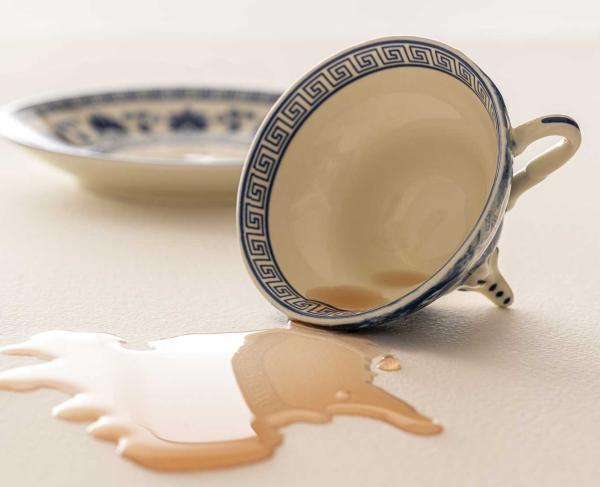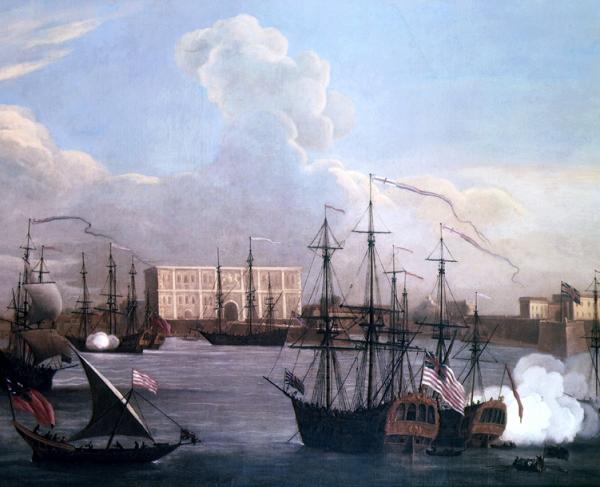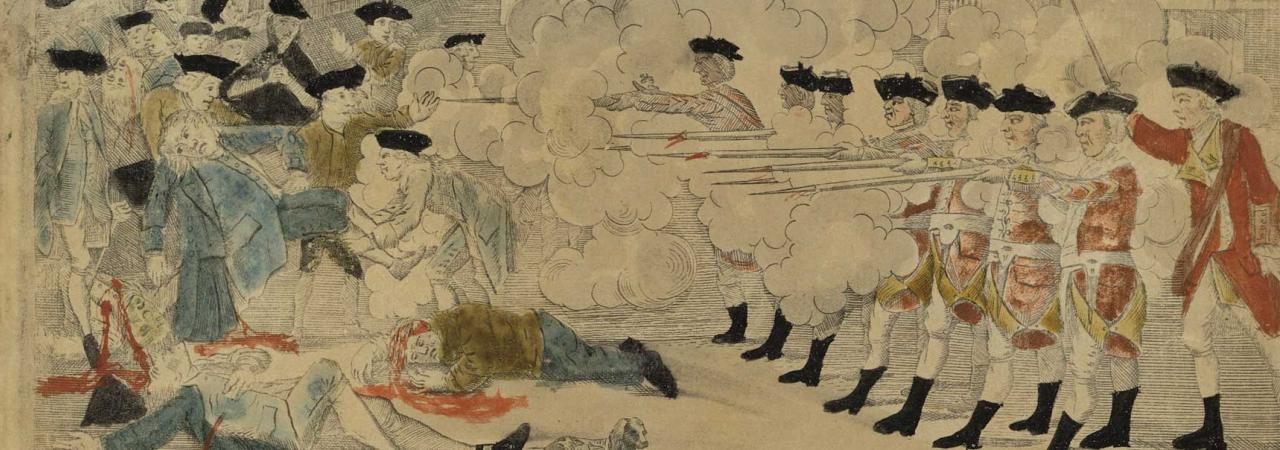
On March 5, 1770, British soldiers shot into a crowd of rowdy colonists in front of the Custom House on King Street, killing five and wounding six.
The Boston Massacre marked the moment when political tensions between British soldiers and American colonists turned deadly. Patriots argued the event was the massacre of civilians perpetrated by the British Army, while loyalists argued that it was an unfortunate accident, the result of self-defense of the British soldiers from a threatening and dangerous mob. Regardless of what actually happened, the event fanned the flames of political discord and ignited a series of events that would eventually lead to American independence. John Adams believed that “on that night, the foundation of American independence was laid.”
Following the end of the French and Indian War, Great Britain began to levy taxes on her colonies to defray the cost of the expensive war. However, colonies who had been in charge of taxing themselves began to openly resist Great Britain. Decades of self-rule and benign neglect had many colonists feeling their liberty was being stripped away by their mother country. Boston was the home to some of the most radical opponents and largest protests. In an attempt to use an excessive amount of force to crack down on these upstart colonials, Great Britain passed the Townshend Acts in 1767 and dispatched the British Army to restore order in Boston. On October 1, 1768, the British fleet arrived, and hundreds of British soldiers marched into the hostile city.
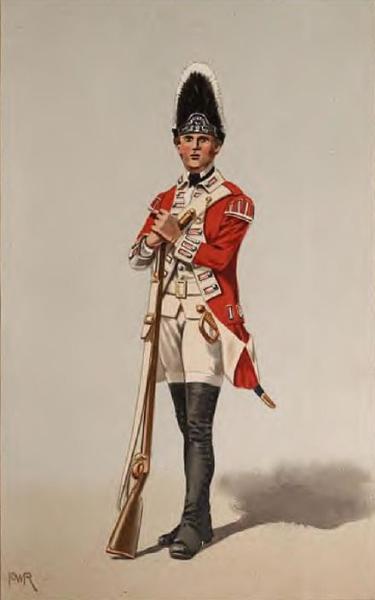
Rather than restore order, this maneuver proved to only worsen relations between the British and Americans. The presence of British regular troops in the streets of Boston enraged colonists, who now felt they were being occupied by a foreign army. British soldiers faced numerous insults and taunting as they patrolled the streets. The verbal abuse soon became physical as fights between civilians and British soldiers became common in the streets of Boston. Angry mobs would frequently protest British soldiers or American loyalists who supported the British policies. In February of 1770, Christopher Seider, an 11-year-old boy, was killed while protesting with a group in front of the home of a loyalist. Thousands of Bostonians turned out for the boy’s funeral and the tension and distrust between the civilians and the British grew larger.
It was just eleven days after Seider’s death, on March 5, 1770, when Private Hugh White of the 29th Regiment of Foot took up a sentry post outside of the Customs House on King Street. The Customs House had taken on symbolic meaning as the center of British taxation. As a young wigmaker’s apprentice, Edward Garrick, passed the sentry, he yelled at a British officer that he had not paid his bill for a wig. The sentry, White, reprimanded the young man. The two engaged in a heated conversation when Private White swung his musket at Garrick, hitting him on the side of the head.
Word traveled through the streets about the altercation and a large mob began to descend on the lone British sentry at the Custom House. As the mob of people began to grow larger and larger, the sentry called for reinforcements. Seven British soldiers of the 29th Regiment of Foot, under the command of Captain Thomas Preston, marched to the sentry’s defense with fixed bayonets. As the nine British soldiers stood guard near the steps to the Custom House, passions enflamed and dozens of more people joined the crowd surrounding the soldiers. Bells began ringing in the city and more people came out of their homes and into the streets. The crowd was estimated to have grown to as many as 300 or 400 people. They were yelling at the soldiers, shouting profanities and insults at the soldiers. Others threw rocks, paddles, and snowballs at the besieged men. One of those protestors near the soldiers was a former slave named Crispus Attucks. The crowd continued to hurl verbal abuse and challenged the soldiers repeatedly to fire their weapons. Preston’s men loaded their muskets in front of the crowd.
The crowd became angrier and angrier. At one point a club or stick was thrown at the soldiers and struck one of the British soldiers. The soldier fell to the ground. He stood back up and yelled, “Damn you, fire!” and fired his musket into the crowd. The musket ball struck Attucks who fell dead to the ground. A few seconds later, the other British soldiers fired into the crowd. Eleven people were hit, five men were killed and six were wounded. After the smoke cleared, Preston ordered his men to cease fire and called out dozens of soldiers to defend the Custom House.
Most of the crowd of civilians left the area immediately around the soldiers as others ran to help the wounded. American blood had been spilled at the hands of British soldiers for the first time. Royal governor Thomas Hutchison arrived on the scene and calmed the anxious and angry colonists and promised justice for what had just occurred. The next day Preston and the eight soldiers involved were arrested and sent to trial for murder.
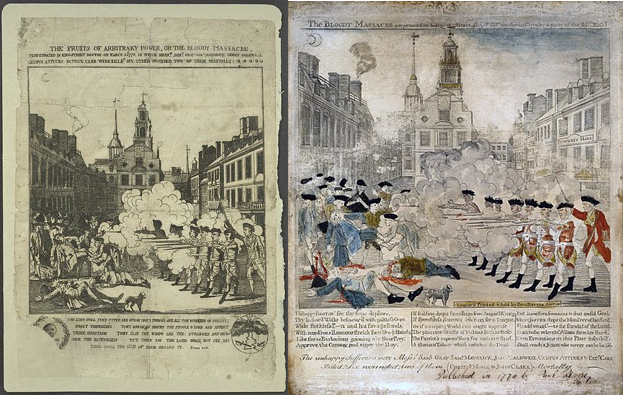
Following the event, patriot Paul Revere made an engraving based on an illustration by Henry Pelham of the event and labeled it with the provocative title: “The Bloody Massacre.” The image depicted a line of British soldiers firing in unison on an unarmed crowd in front of the State House. This incendiary image outraged many colonists as the event soon became known as a massacre. Broadsides depicting black coffins for the men killed in the incident appeared in newspapers. The funerals for these victims became large public events where patriots displayed their anger at the occupying soldiers.
As public sentiment against the British soldiers grew, Massachusetts placed the soldiers on trial for murder. It became very difficult to find someone who would be willing to publicly defend the British soldiers. Then patriot John Adams agreed to defend them. Despite the public backlash to his defense of the British soldiers, Adams believed it was important to show the British that a fair trial could be held in the colony of Massachusetts, despite the inflamed passions. After a heated trial, Adams was ultimately victorious in showing the British soldiers were not at fault and had acted in self-defense. Six soldiers were found not guilty and two were found guilty of the lesser charge of manslaughter.
The Boston Massacre was one of the most important events leading up to the Revolutionary War. The tragic event was commemorated annually in Boston with orations that further fueled negative views of the British soldiers living amongst them. With the large amounts of distrust between the colonists and British soldiers, Massachusetts citizens would need to look to their own defense against possible aggression by the British Army. The two would finally clash five years after the event at Lexington and Concord outside Boston. Almost 50 years after the fact, John Adams described the importance of these events: “How slightly however, historians, may have passed over this event, the blood of the Martyrs, right, or wrong, proved to be the seeds of the Congregation. Not the Battle of Lexington or Bunkers Hill; not the surrender of Burgoyne, or Cornwallis, were more important events in American history than the battle of King Street, on the 5th of March 1770.”
Want to learn more? Watch our Boston Massacre: Animated Graphic Novel
Further Reading
- John Adams Under Fire: The Founding Father's Fight for Justice in the Boston Massacre Murder Trial By: Dan Abrams and David Fisher
- The Boston Massacre By: Thomas Fleming
- American Rebels: How the Hancock, Adams, and Quincy Families Fanned the Flames of Revolution By: Nina Sankovitch
- The Boston Massacre: A Family History By: Serena Zabin
